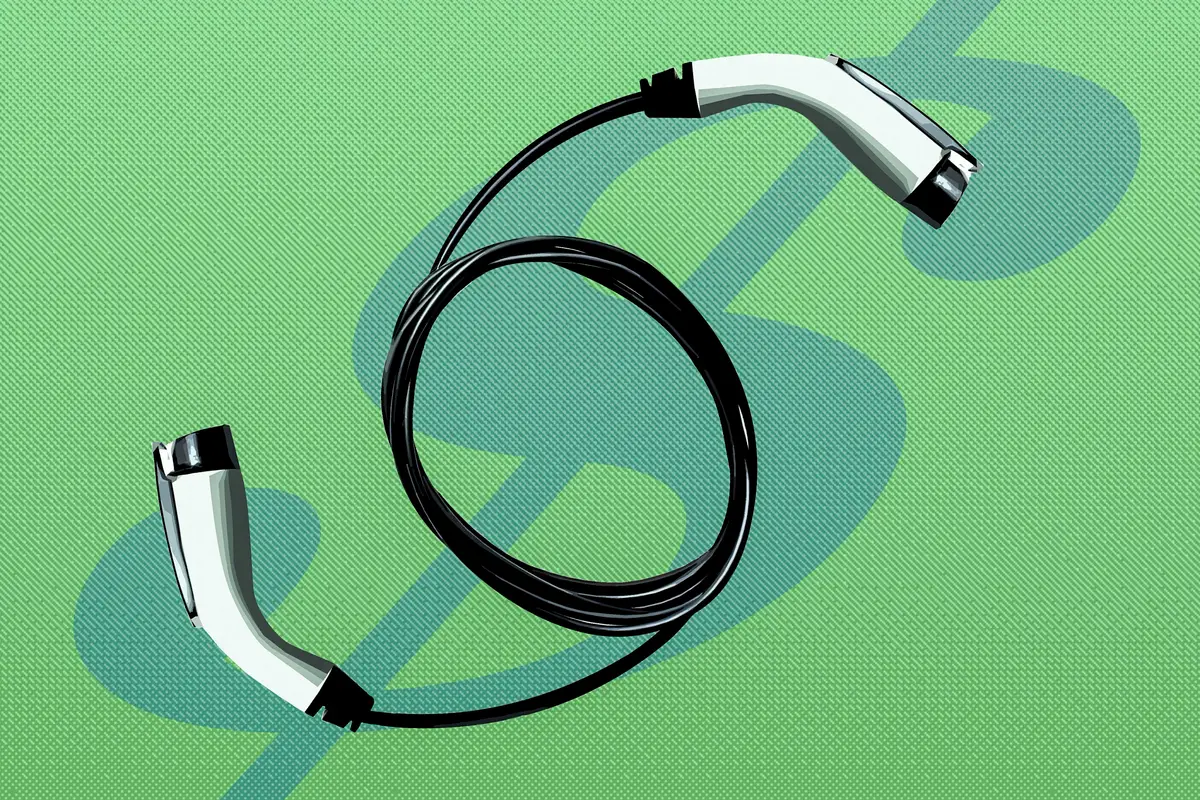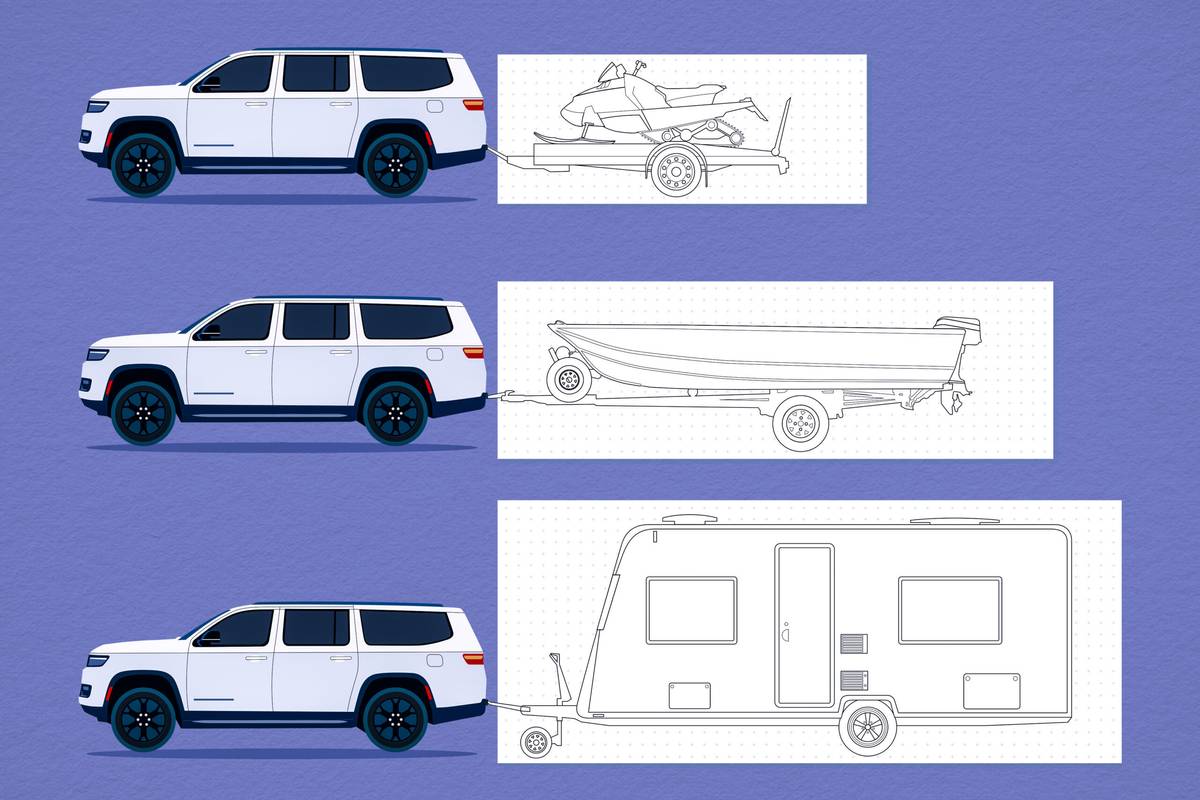Video: 2021 Ford F-150 Raptor: Review
By Cars.com Editors
January 4, 2022
Share
About the video
The wildest F-150 is back. This is the 2021 Ford F-150 Raptor, and we have some good news — and some bad news. Watch our video to find out more.
Transcript
(upbeat music) The wildest F-150 is back. Meet the 2021 Ford F-150 Raptor. And I've got good news and I've got bad news.
The good news is that the Raptor is still a phenomenal machine thanks to significant upgrades to it's suspension, a new dual-valve active exhaust system, and a much higher tech interior. The bad news is that the Ram 1500 TRX exists, and until Ford answers with the Raptor R, coming sometime in 2022 and allegedly with a V8 derived from the Shelby Mustang GT500, the current off-road truck battle looks something like the ending to "Jurassic Park," a much larger and more powerful T-Rex fending off the challenges of some clever but ultimately weaker raptors. I'm sorry if I just spoiled a nearly 30 year old movie for you. You can check out what I did in the TRX at a dragstrip elsewhere, but I'm here to talk about the Raptor and I really wanna focus on the good, because while the Raptor was already a delight to drive, they set down on crowded city streets the updates have only made it better. Inside that starts with an impressive 12 inch digital instrument panel, and 12 inch touchscreen display running Ford SYNC 4 operating system. We really like SYNC 4, the graphics are clear and crisp. The menus are fairly easy to use. There can be a bit deep given all the information that's presented, but also great about SYNC 4 is, would you look at that? Physical controls. You get physical controls for volume and tuning, climate and a whole host of other things. Ford's newer SYNC 4A system that we're starting to see on things like the Mustang Mach-E, and the upcoming F-150 Lightning, it uses a more portrait oriented screen and moves a lot of these physical controls into the touch screen. Call us old fashioned, but we'll take physical climate controls any day. You also get a lot of nifty features here like wireless charging, USB-A and C ports, and SYNC can run Apple CarPlay and Android Auto wirelessly. These are the standard front seats in the Raptor and they've got a decent amount of bolstering. I found them quite comfortable on longer drives, and they do a good job of holding you in place. Backseat room in the Crew Cab only Raptor is also great. Tons of leg room, tons of headroom, tons of shoulder room, just like any other Crew Cab F150. Visibility in the Raptor is kind of a mixed bag at least for me, from my seating position the eight pillars can kind of get in the way and the sheer width of the vehicle, and the big power dome hood kind of makes you feel more like you're driving a heavy duty truck than just a full-sized pickup. But Ford makes up for that with some great camera systems. This has the available 360 degree camera system, very clear and crisp resolution. And it's also useful for off-roading, in certain off-road modes you can get forward facing camera and even tire lines to help you show where you're going when your view is obscured. One feature that made it over from the regular F-150 is the built-in work surface where you fold down the gear selector and then the center console flips forward into a table. Not sure why Ford felt like including it on the Raptor, but hey, if you're bombing through the desert and you got to stop do some work, eat some lunch, you get a nice little flat surface to do so. If Ford wasn't going to update the Raptors powertrain right away, they certainly didn't just upgrade the interior and call it a day. The rear suspension is an all new five links set up with extra long trailing arms, a Panhard rod and 24 inch coil Springs. That means with the standard 35 inch tire package, you get 15 inches of rear suspension travel. Ford also gave the Raptor new FOX Live Valve active shocks. They're 3.1 inches in diameter. That's the largest ever on a Raptor. They're adaptive. They can process changes at up to 500 times per second and produce over 1000 pounds of damping force at each corner. Available on the Raptor, but not on this model is a $7,500 37 inch tire package. It obviously upgrades the tires from 35 inches to 37 inches. So ground clearance increases to 13.1 inches from the standard 12. What all those suspension upgrades really boiled down to is that according to Ford, this is the most capable and comfortable Raptor on and off-road. Unfortunately, we didn't really get to put the Raptors through it's real paces doing high-speed off-roading. We did get to do some low speed stuff, which as we've experienced in other Raptors, this is more incapable, low speed rock crawling and dealing with other obstacles. It's not super happy about doing that. It always kind of has sort of a Ricky Bobby, I wanna go fast feel to it, but despite that it is actually fairly easy to modulate the throttle in low speed off-road situations. And if you prefer there is Ford's Trail Control off-road cruise control as well as Trail 1-Pedal driving which basically lets you use just the accelerator pedal to control your forward momentum. So you push it down and you go a little faster, you let off the gas, it breaks for you. I personally prefer doing everything myself, but it's a nice feature to have if you want it. The biggest obstacle facing the Raptor is actually its massive width. It's nearly 87 inches wide that's far and away the widest F-150 and that's not including the side mirrors. Interestingly, with the side mirrors extended, it is just as wide as any other F-150. Those marker lights you see on the front that have been copied time and again just for style are not for show here, they're required because of just how wide the F-150 is. On the street, the Raptor is plenty quick. I'm not certain, it's quicker than our own F-150 limited hybrid, but it would definitely give it a run for its money. The 3.5 liter twin turbo-charged V6 makes 450 horsepower. That's the most of an F-150, and 510 pounds feet of torque that does trail the PowerBoost 3.5 liter hybrid. While those power figures pale in comparison to the TRX, one trade-off for that is significantly better fuel economy. It's not great by any means, but at 15, 18, 16 miles per gallon, it is a bit less thirsty than the TRX. It is also worth noting that four of the state to power figures for the Raptor, Ford recommends premium gas which with the 36 gallon fuel tank can get kind of pricey. Steering field on the Raptor is geared a little bit more towards off-roading, so it does feel a little loose, not too much looser than a regular F-150, and it's not really that spongy. If you do want a tighter experience, you can always switch the steering over to sport mode, that'll tighten things up a bit for you. Regardless of driving mode, this suspension will just devour Chicago potholes and road imperfections like these, but it is worth noting that there are some noticeable differences. Normal gives you a bit more side to side motion. Off-road gives you a lot more. It does feel more playful in off-road at least to me, and this setting which is Sport currently really eliminates almost all the lateral movement. It makes it feel about as much as a sports car as something of this size can. One complaint about the previous generation Raptor was that it just didn't make a very good sound. People were missing the signature V8 sound that Ford's were known for, and their placement of the 3.5 liter twin turbo charge V6 just didn't give you the same noise. Ford's answered some of those complaints with this new active valve dual exhaust with a equal length of three inch pipes. You get multiple selective modes. This is quiet. (car engine revving) And we can go from quiet to normal. (wind whooshing) (car engine revving) Above normal, we have sport. (car engine revving) And then last and extensively for off-road use only is the Baja mode, which really gives you a nice little growl. (car engine revving) Now, it still doesn't sound as good as the TRX. It just doesn't. (car engine revving) But it sounds better and that's a plus. Hopefully when the Raptor R comes out we'll get some really nice exhaust notes. Also worth noting, with these big off-road tires, you're gonna get some tire noise that's just the nature of off-road tires. It's much more noticeable in quiet environments, driving this up in Wisconsin where there's not a lot of ambient noise it really stood out, driving it here in Chicago where there is constant noise, not really much of a thing. One other nifty feature that carries over from the regular F-150 is the optional Pro Power Onboard generator. Now, the Raptor is an a hybrid, so this maxes out at two kilowatts whereas the hybrid you can get up to a 7.2 kilowatt generator, but this should still be enough to power things like camping lights or any other toys you might bring into the wilderness with you. It's also worth noting that this very subtle graphics package is optional and costs over a $1000. If it's not your thing and it's not mine, you don't have to get it. The same applies to the graphics package that comes with the 37 inch performance package. The 2021 Raptors towing and payload have also been increased by 200 pounds each over the previous generation. Towing is still on the lower end of the spectrum, but not the lowest while payload is still very much the lowest among all the F-150s. All of this off-road gear comes with a cost. And speaking of costs, the 2021 Raptor starts at almost $66,000 including destination and this example clocks in at over $78,000. That's a significant leap from the prior generation and there's some overlap with the TRX and that's really the Raptors problem, the TRX still exists. And in a very narrow segment where bragging rights are everything, Ford has seated the high ground to Ram. That's not to say the Raptor's bad, it's a great machine, it's much improved and I love driving it. But until Ford gives us the Raptor R and presents a more serious challenge to the TRX, Ram is still king of the dinosaurs.
Featured stories

By Cars.com Editors
July 14, 2025

By Cars.com Editors
July 11, 2025

By Robert Duffer
July 11, 2025
